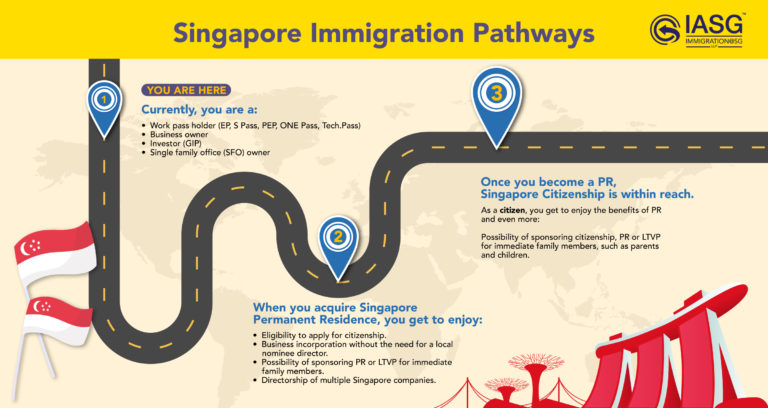Japan has been facing the issue of shrinking population due to an ageing population and low birth rate. What can Singapore learn about the importance of immigration from this?
Japan’s Population Decline
In 2021, Japan’s population shrank by 644,000–a shocking 0.5% of all citizens. Compounding the problem is a rapidly-ageing society: the elderly demographic is projected to comprise one-third of the population in 2040 but birth rates are as low as 1.36 per woman. Over the next few years, without a consistent, sufficient supply of manpower to replace retirees and enough young people to support more and more dependents, huge social, economic and existential challenges lie ahead for Japan.
Immigration as a Solution
One key solution to Japan’s population problem is to welcome more foreigners. There is just one obstacle: the country is notoriously resistant to immigration. It has one of the most selective, restrictive immigration regimes in the world, in large part due to a strong anti-foreigner, nationalist right wing presence and widespread xenophobia, fuelled by a popular preference for ethnic homogeneity. Although the population problem has been worsening since 1989, it was only in 2019 that the late Shinzo Abe’s government began loosening immigration restrictions. To solve its manpower problem and rejuvenate its slowing economy, Japan needs immigrants–now more than ever.
Reducing Dependency on Manpower via Digitalisation
Another solution being touted is digitalisation. Moving entire industries online and automating tasks improves labour productivity, frees up precious manpower towards more value-added sectors and helps compensate for a declining workforce. However, for being the world’s third-largest economy, Japan is surprisingly low-tech: many workers still prefer fax and paper over emails and computers, which hurt productivity greatly during the pandemic. Many struggled to adapt to online meetings and wasted time travelling back-and-forth to consolidate physical paperwork, slowing work down immensely. It does not help that Japanese students are weak in digital skills and relatively few study STEM subjects, leaving the country critically short of engineers, Artificial Intelligence and Internet of Things (IoT) experts who can drive digitalisation.
If Japan wants digital technology to solve its problems, it needs foreigners. Once again, the issue of its immigration policy and social resistance crops up. Yet, it is clear that no matter what approach it takes, foreigners will be a central part of the solution. Foreigners temporarily make up for the manpower shortage, train locals in key digital skills, introduce their knowledge to develop problem-solving technologies and revive a decelerating economy. Anti-immigrant attitudes will only hurt the country in the long run; if Japan wishes to avoid backsliding, its people must be willing to embrace foreign talent.
How Does Japan’s Shrinking Population Relate to Singapore?
Japan’s situation is, essentially, what would hypothetically happen to Singapore if all its problems were turned up to the extreme. Both countries face similar problems, but one key difference sets Singapore apart: its relatively more open immigration policy is what has enabled higher economic growth and quicker pandemic recovery. If anything, Japan’s crisis emphasises how important it is for Singapore to remain open to foreign talent.
Local Resentment
Singapore is not immune to anti-foreigner sentiment. The local vs foreign talent debate has been raging on for years now, with some Singaporeans reporting feeling “crowded out on public transport” and “squeezed out of jobs” by foreigners. The issue of balancing the need for talent and local interests is multilayered and complex; it involves tackling sensitive and highly-personal issues of race, national identity, xenophobia and social justice, which we cannot do in just one article. However, in relation to skilled talent, we would like to offer an alternative take: foreign professionals play a crucial role in empowering Singaporeans to reach greater heights, and can work hand-in-hand with locals to push the economy forward. Foreigners and locals are not mutually exclusive.
Transfer of Knowledge & Expertise
For one, foreign professionals bring with them valuable knowledge and expertise that Singapore does not have, enriching the economy with fresh perspectives. This opens up opportunities for Singaporeans to broaden their own horizons, receive mentorship and learn from these professionals. In our professional experience, some of our clients have taken up teaching positions in institutes of higher learning and advisory programmes to personally groom young local talents. These examples point to the existence of avenues for Singaporeans to develop experience, leadership skills and capacity, enabling them to lead and innovate independently later on.
Job Creation For Locals via Foreign Business Incorporation
Foreign professionals also contribute greatly by creating more employment for Singaporeans. As many foreigners establish their businesses in Singapore, especially in new and emerging sectors, they open up positions that not only require local insight, but also offer many exciting opportunities for Singaporeans to experience entirely new industries and lines of work, upgrading the skills of the local workforce further. One example is in the urban sustainability sector, an industry relatively new to Singapore: MNCs such as Bollore Singapore frequently tap on the knowledge of local researchers to understand Singapore’s roads, climate and built environment. In other words, besides increasing local employment, foreign businesses bring even more value to local expertise and perspective.
Lessons from Japan’s Shrinking Population
The case study of Japan highlights the need for Singapore to keep attracting and retaining foreign talent, and prompts us to think about how foreigners and locals can work together rather than stay apart. Foreigners have been integral to Singapore’s economic and social development, and will continue to play a role as Singapore transitions to Industry 4.0.







